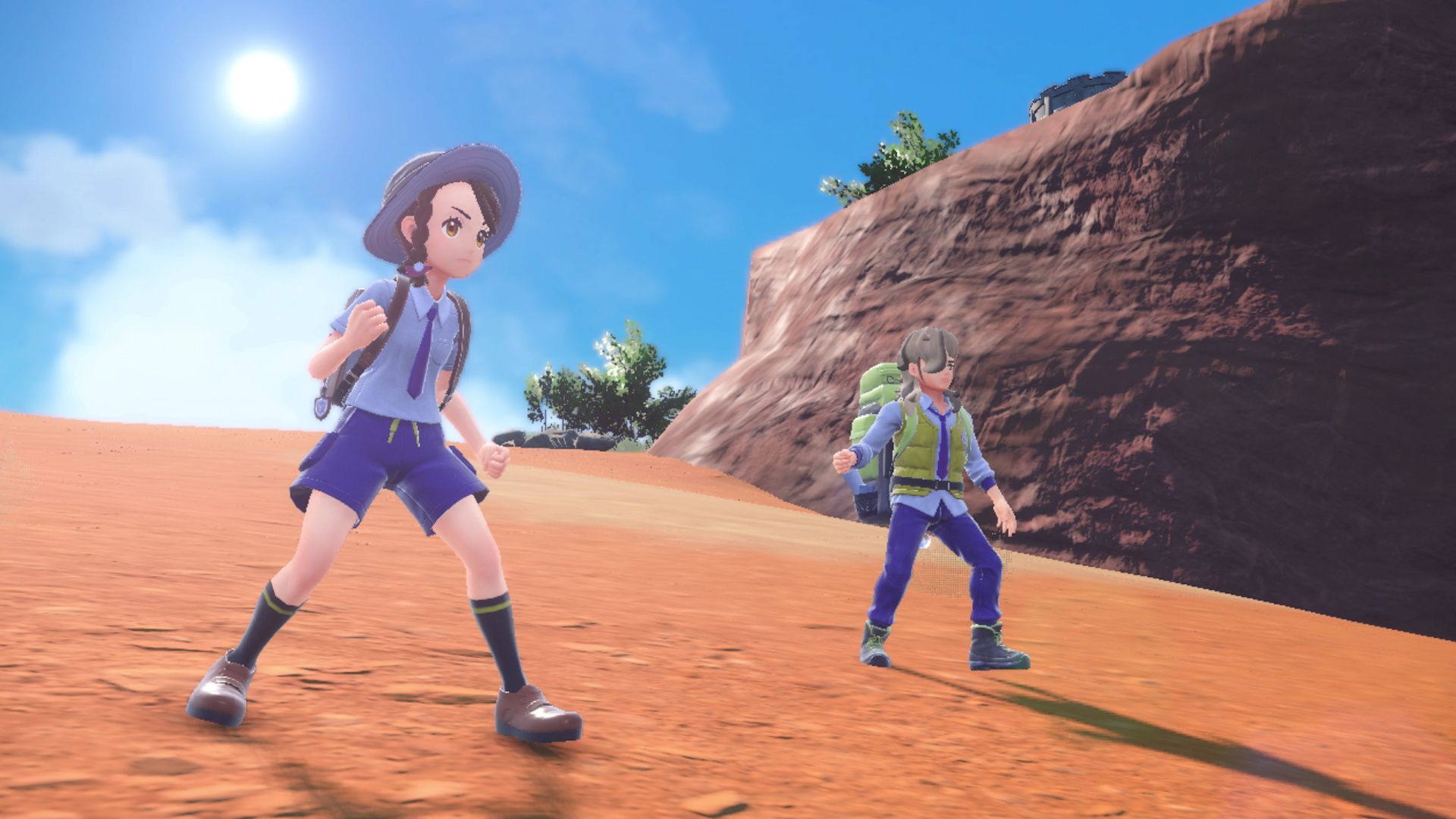Tom's Guide Verdict
Pokémon Scarlet and Violet adds a number of changes to the classic Pokémon formula, and most of them pay off, particularly the auto-battles, vast open world, and the three distinct storylines. The games do suffer from performance and stability issues, as well as some troubles with scaling the open world difficulty. Those problems are far from game-breaking, leaving them an overall enjoyable experience.
Pros
- +
Three engaging storylines
- +
Multiple types of battles
- +
Large open world
Cons
- -
Inconsistent performance
- -
Pixelated graphics and robotic animations
- -
Confusing order of objectives
Why you can trust Tom's Guide
Pokémon Scarlet and Violet are the latest entries in the classic RPG series, where players can explore the region of Paldea. Like every other generation of the core Pokémon series, Scarlet and Violet challenge the player to collect various Pokémon and engage in gym battles. However, Scarlet and Violet also feature a gang of truant students called Team Star in one side story, and battles with massive Titan Pokémon in the other.
Pokémon Scarlet and Violet make some pretty decent departures from the traditional Pokémon formula, especially the co-op gameplay, four-player Tera Raid battles and open world map. These changes are intriguing choices for a franchise that has always stuck to a tried-and-true formula in the past, but they’re also a gamble. We’ll discuss how these changes paid off, and how they didn’t, in this Pokémon Scarlet and Violet review.
Pokémon Scarlet and Violet: Story
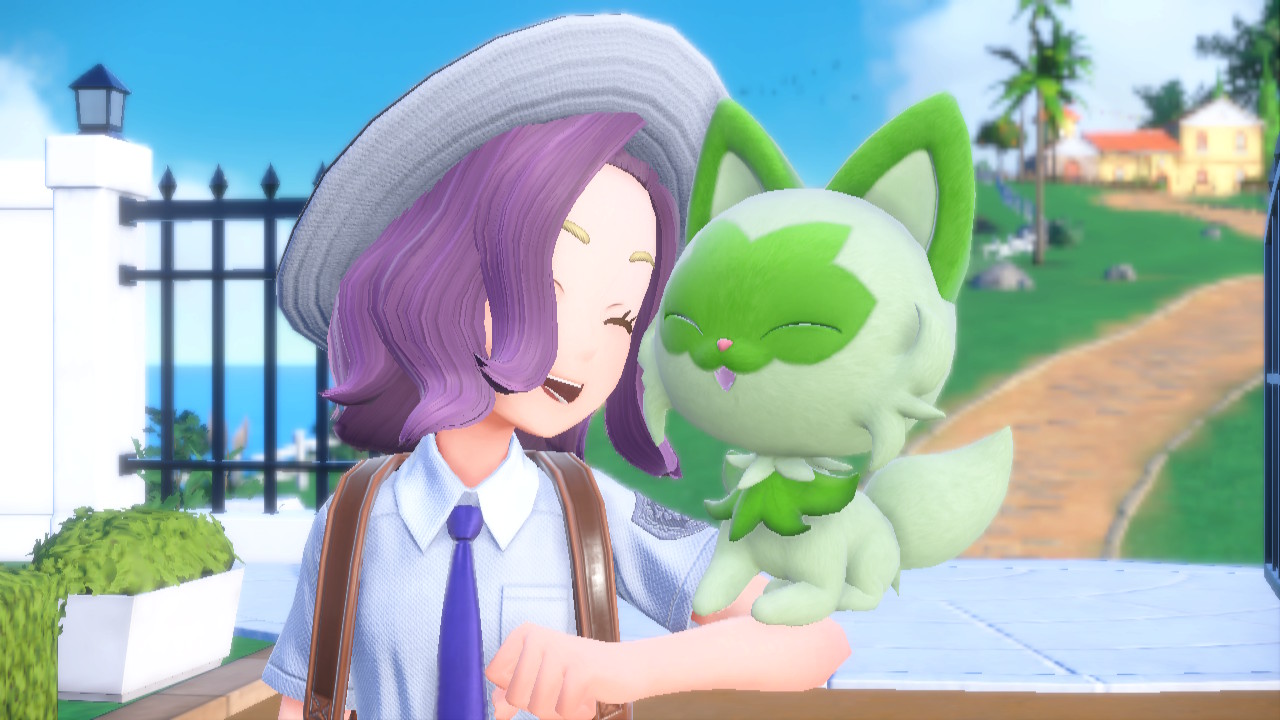
In Pokémon Scarlet and Violet, Victory Road tells the traditional core story. A young teen leaves their hometown alongside a new Pokémon partner, and promises to take on the Pokémon League by challenging eight gym leaders, the Elite Four, and the current League champion. While each of the gym leaders and Elite Four members in Pokémon Scarlet and Violet have their own backgrounds and styles, the arc of Victory Road is a pretty straightforward underdog story.
Some of the pre-battle gym challenges are a bit odd, and involve obstacle courses or “I Spy” games. However, the gym leader fights are relatively rote. The only major update this time around is in the characterization of the player’s rival. In the eighth generation of Pokémon games, and here in the ninth, the player’s rival character is less a combative bully and more a friend who just really likes to compete. Pokémon Scarlet and Violet’s Nemona may be a frequent challenger during Victory Road, but she’s more of a supportive figure than an antagonistic one, which gives the storyline a more wholesome feel.
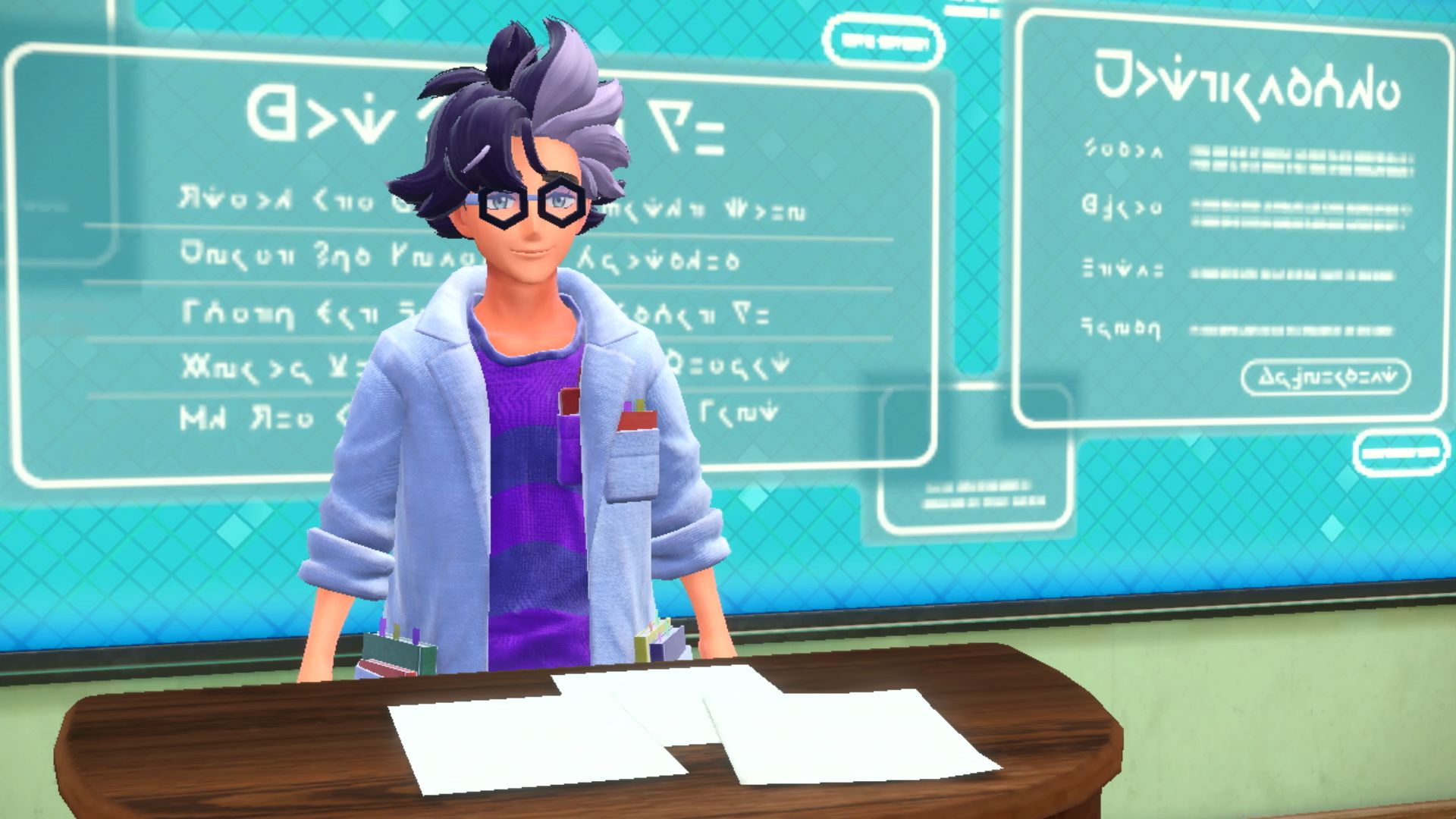
Path of Legends is more of a boss-rush story, where the player and fellow student Arven take on five giant Titan Pokémon all around Paldea. The first Titan Pokémon players will likely face is Klawf, a rock-type crab Pokémon that clings to the side of a canyon wall. Players battle Klawf alone until the Titan runs away, whereupon it heals and comes back stronger. During phase two, players can enjoy some co-op battling with Arven to take down the Titan. Throughout the battles with the Titan Pokémon, players receive five badges from Arven, and learn about his motivations for finding and hunting the creatures.
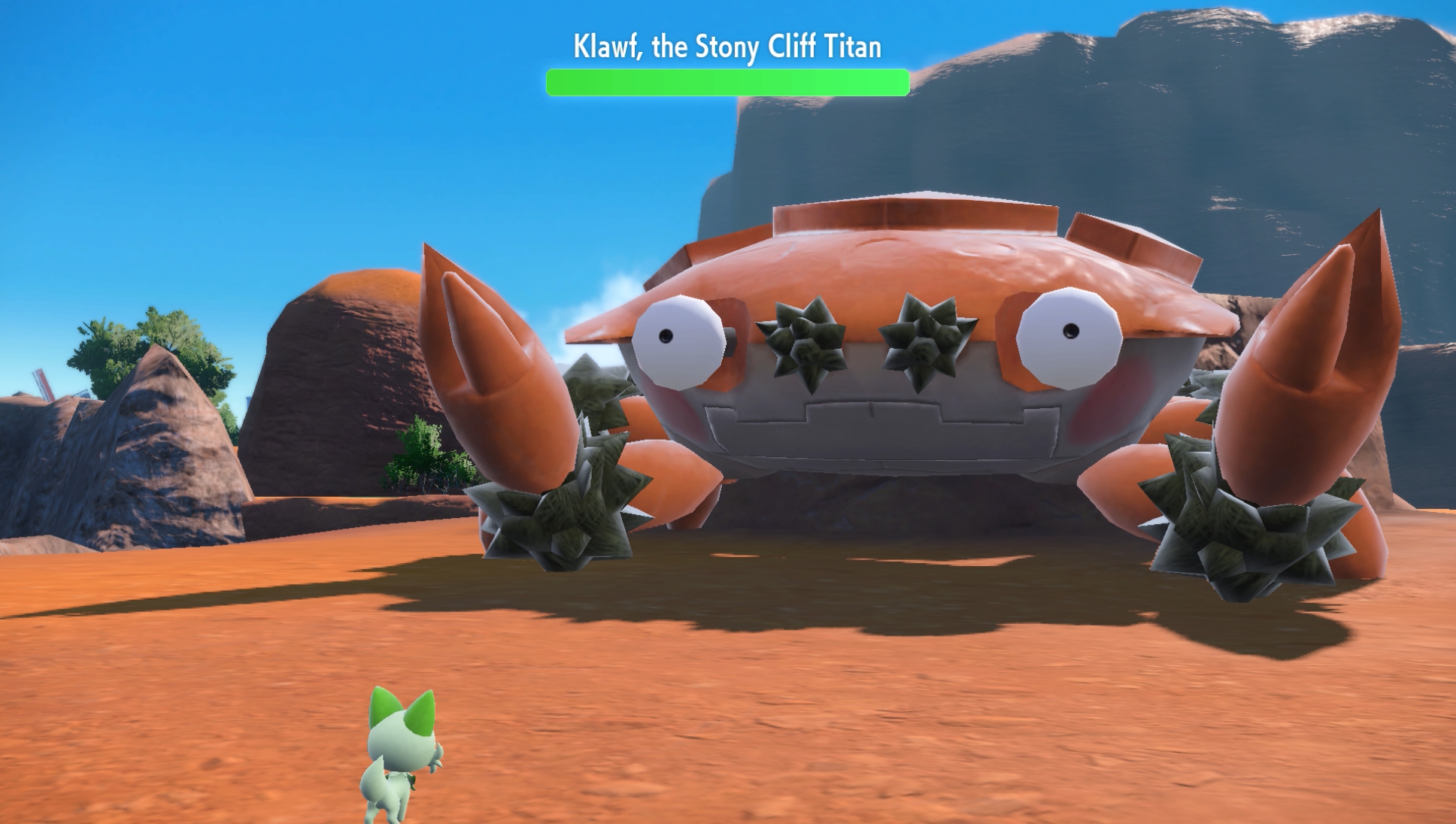
Starfall Street is a more anime-style storyline, in which players join Operation Starfall. There, they aim to bring down the five leaders of the Team Star gang and their mysterious, missing boss. After taking on each Team Star base by auto-battling against their Pokémon, players challenge the leader in a more traditional Pokémon battle. While the starting Pokémon for each Team Star changes based on the team’s type, the final fight feels a bit closer to a Titan Pokémon fight. As such, you get some real variety in combat when taking on Team Star. Once each leader goes down, you get some backstory on each member of Team Star and why they’re so focused on not going to class.
Pokémon Scarlet and Violet: Gameplay
Like any Pokémon game, the majority of the battles in Pokémon Scarlet and Violet are turn-based ones, where each trainer issues orders to their Pokémon. Whichever Pokémon faints first, loses. While there are many different weaknesses, status effects and special moves you can play around with for higher-level strategies, most of these fights are relatively straightforward.
Pokémon Scarlet and Violet also feature a “Let’s Play” mode, where the player can release their lead Pokémon to engage in auto-battles. This is a pretty easy way to level up your team, as the Pokémon fights on its own without needing orders from the player. However, once the Pokémon is low on health, it will return to its Pokéball, so you will still need to keep an eye on things and not send out a tired Pokémon.
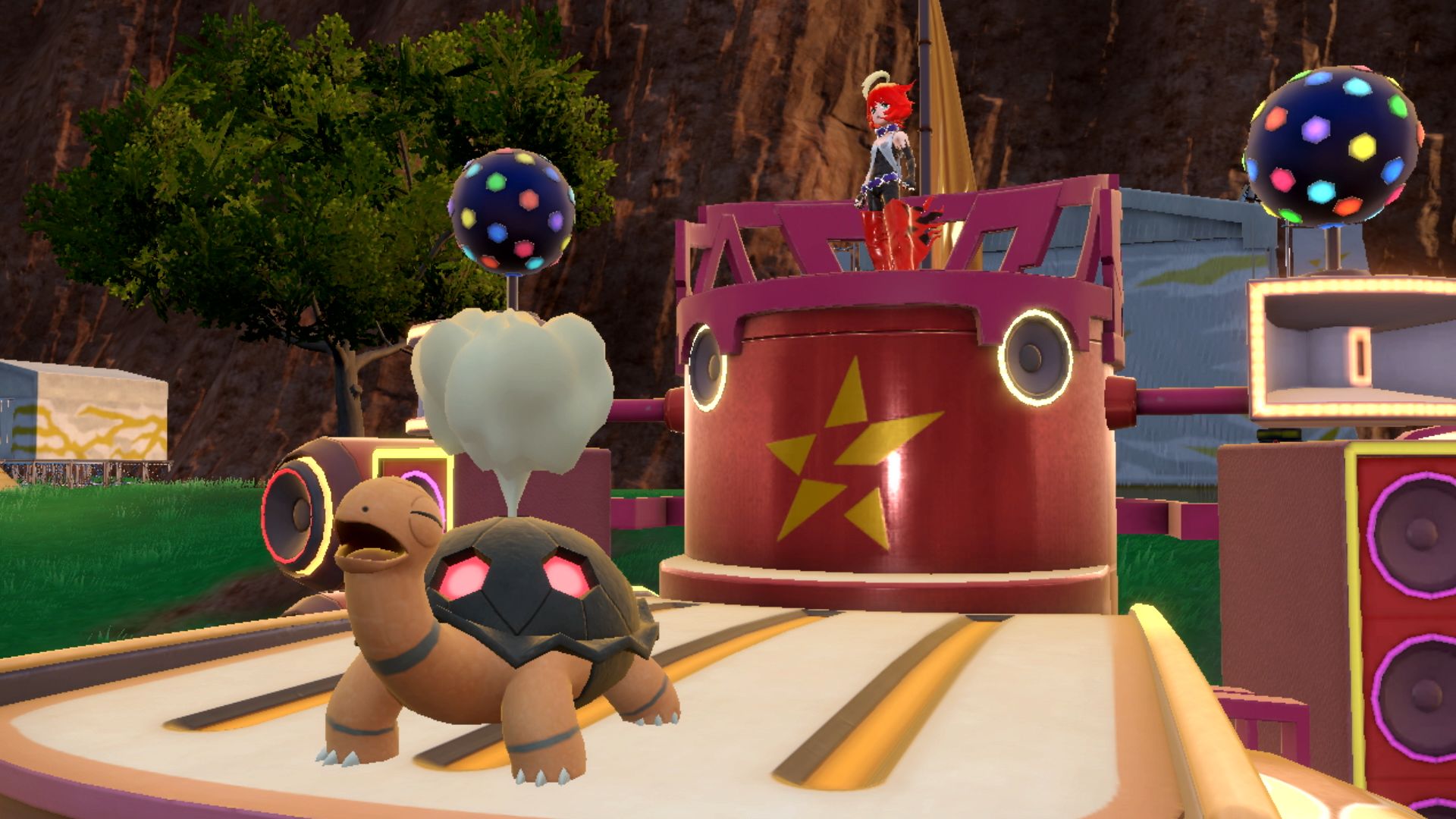
Tera Raids are unique to Scarlet and Violet, and are tied to Paldea’s Terastal phenomenon. This mode gives Pokémon a crystallized Tera form. During Tera raid battles, up to four players can take on highly dangerous Tera Pokémon in a coordinated assault. This is just one of the co-op options for Scarlet and Violet. Players can also team up with a friend and enjoy trading, battling each other or simply roaming the open world. The multiplayer servers were down during our review period, so we weren’t able to test out these features firsthand, though.
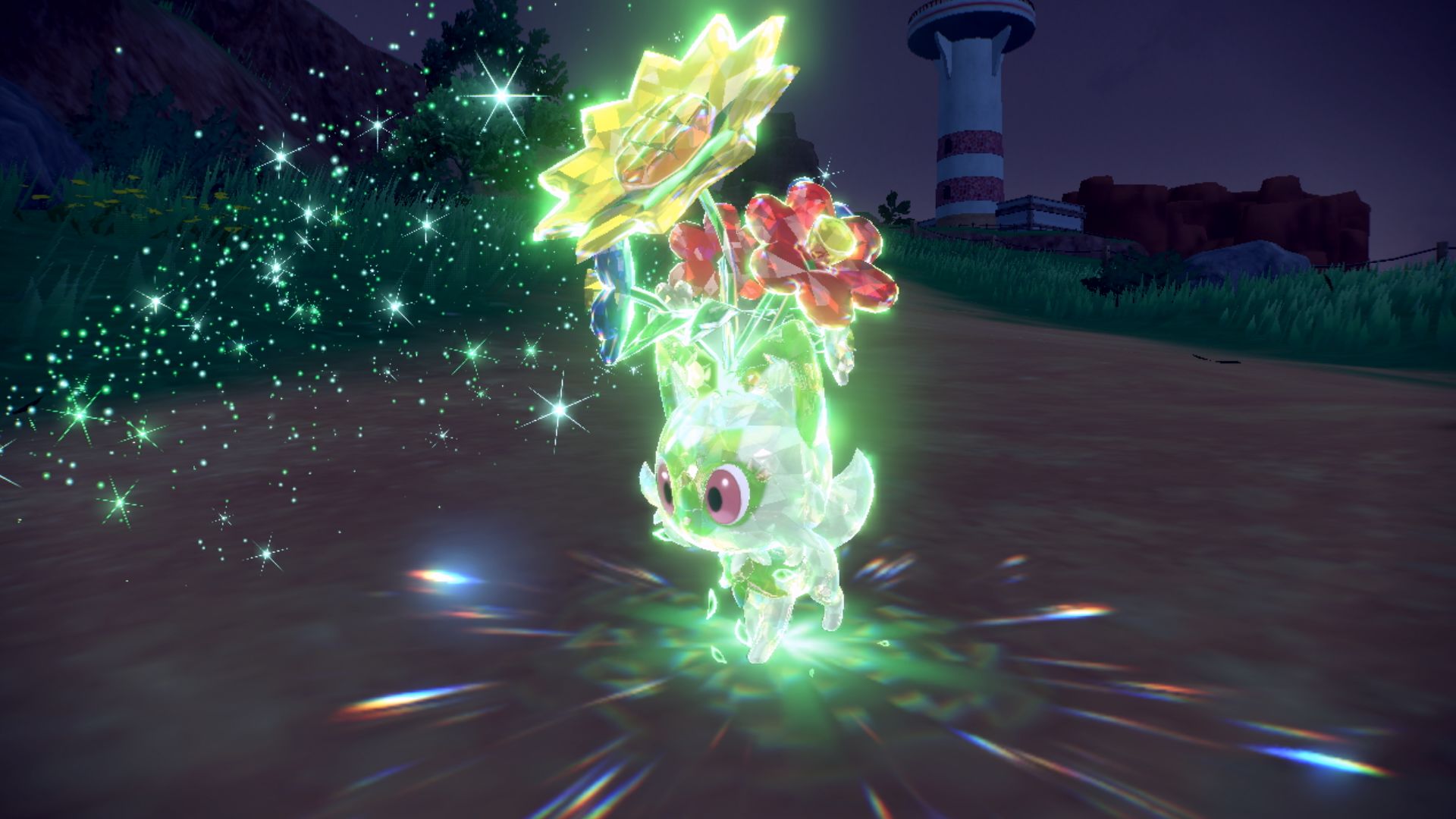
The country of Paldea is pretty diverse for an island, as you have beaches, forests, deserts and snow-covered mountains. You get a Pokémon mount, Koraidon or Miraidon, and can level up their traversal abilities over time. This lets you fly, swim and dash around the map. You won't be able to access a few areas from the start, as you'll be missing some of Koraidon or Miraidon’s abilities.
The trouble with this approach is that Pokémon Scarlet and Violet still have the classic leveling system. All three storylines suggest specific levels for when you should take on each gym leader, Team Star base or Titan Pokémon. However, you can’t find any of that information on the map or quest tracker, so it's easy to get in over your head, or miss out on some of the early-game bases and gyms. This can be a little frustrating, as you'll sometimes go back and take on content for which you are wildly overleveled.
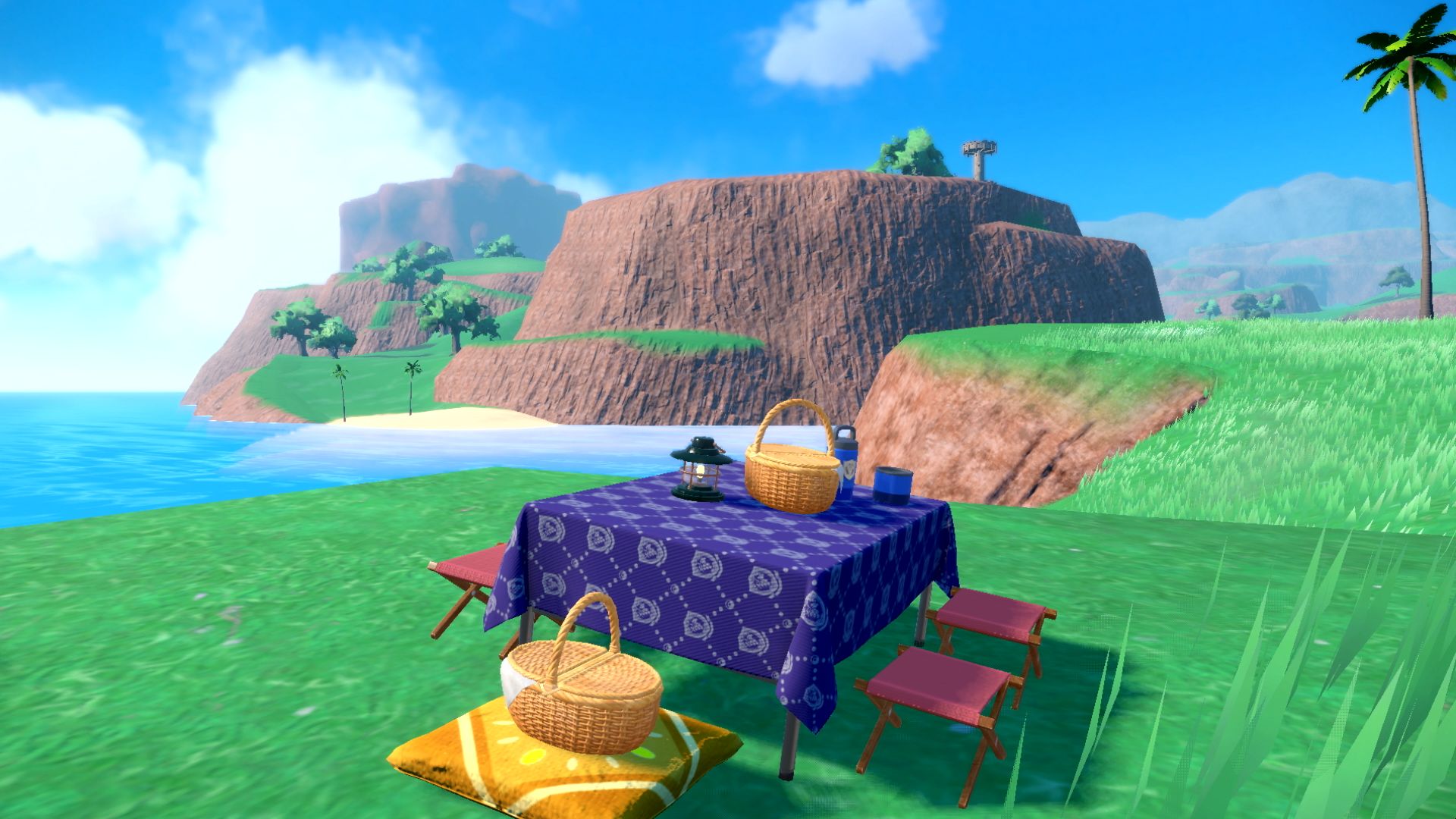
The only real exception are the fights with your rival, which scale to your team’s average level and number of badges. As such, you can fight with Nemona outside of the final gym with a team that is wholly unprepared for the gym leader’s level.
If you take your time exploring, you’re less likely to run into this problem. But if you want to play hooky and not attend your classes, it can be easy to end up in the wrong places. However, attending class and passing your exams does net you some bonus items, so it's not a complete wash. Either way, Paldea is a large area to explore, so you may as well set up that picnic table, make a sandwich (this is also something you can do in the game) and enjoy the small things about exploring the world.
Pokémon Scarlet and Violet: Performance and graphics
Like many late-generation Switch games, Pokémon Scarlet and Violet suffer from the hardware limitations of the console. This is mostly present in frame rate drops while exploring in docked mode, screen tearing while dashing and some pixelation on the Pokémon effects.
The frame rate drops and screen tearing are most noticeable in docked mode due to the increased draw distance and resolution, but they can also happen in handheld mode. The pixelation of Pokémon effects are visible in both modes. But the issue mostly affects ghost-type Pokémon, as they often appear translucent, and employ specific textures and animations that make the pixelation incredibly obvious.
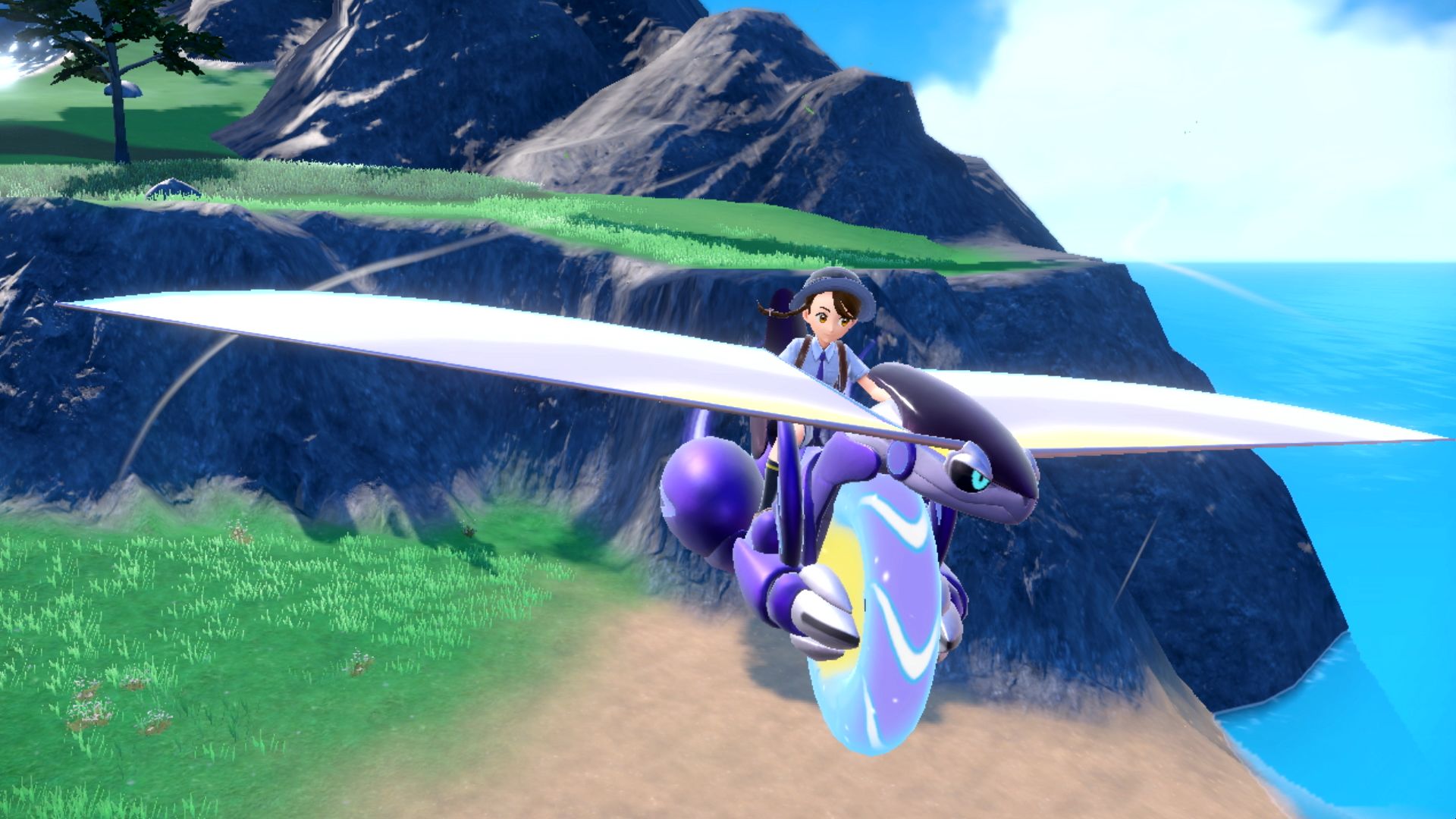
There are also long load screens for cutscenes, classes and gym battles. There are no loading screens while exploring the open world, though, so that may be a fair tradeoff. Mesagoza is the only city in Paldea that is gated off from the open world, so everything else is free for you to explore at all times.
Pokémon Scarlet and Violet: Verdict
As the ninth generation of Pokémon games, Pokémon Scarlet and Violet change up a number of the series’ formulas with multiple types of co-op, different kinds of battles and a large open world map. It also has three engaging storylines and a variety of interesting characters, from your rival Nemona, to your Titan-hunting partner Arven, to the gym leaders and Academy teachers themselves.
While Scarlet and Violet suffer from many of the same issues as other late-generation Switch titles, those faults aren’t game-breaking, particularly when you consider the target audience for the series includes many casual gamers and children. It’s an entertaining game overall, with plenty of wholesome moments to enjoy, and a lot of content to explore for both fans and new players alike.
